
Skin thinning and loss of support, both on the face and body? Flabbiness can be briefly defined as a lack of skin tone.
Juliana Jordão, a dermatologist and senior member of the Brazilian Society of Dermatology, comments that many women identify the onset of sagging when they feel their skin softening and notice the appearance of pockets in the eyelids, or excess skin in the mandibular contour and neck.
5 ways to treat and soften sagging skin
Below you will find the main guidelines from professionals on what steps you can take to take care of sagging face and body.
1. Creams
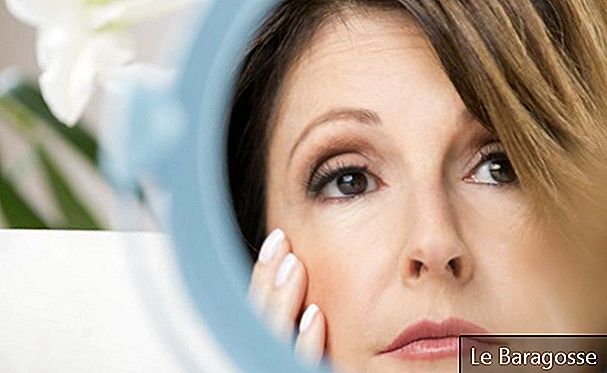
Michele Haikal, a dermatologist specializing in anti-aging medicine and exercise-related nutritional sciences, comments that, regardless of where the flab occurs, it has to do with the dermis, which is where collagen fibers and elastic fibers are, and may also have to do, depending on the case, with the musculature.
The creams are absorbed to the epidermis, to get to the dermis something has to be injected or have to be helped by a device that opens the entrance door, for example the co2 laser, or even a micro-puncture. Unless the cream is a transdermal gel? But in this case the substance will go to the whole organism, and must be prescribed by the doctor according to each one's exams, as these are usually transdermal hormone gels, so they must be prescribed based on the patient's hormone tests and will act. because they will act on the whole organism and even the dermis and musculature. Really when it moves this part, we have the best effects of all, compared to other procedures, because this is treating the cause ?, says.
Also read: 29 Tips For You To Lose Belly
Face and neck
For Juliana, the use of creams is interesting. Hyaluronic acid creams keep the skin hydrated. Vitamin C and resveratrol creams, for example, work as antioxidants, preventing the aging process. Check out some creams that can be used to soften and combat facial sagging:
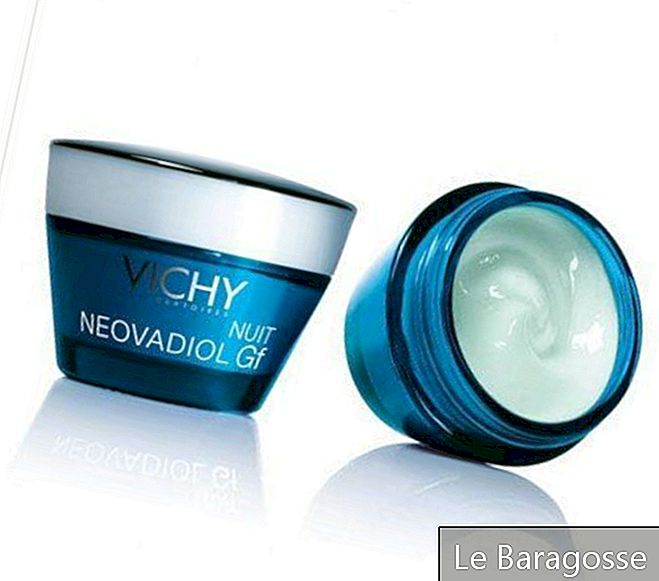
Neovadiol GF Night Vichy for R $ 189,90 at Aromatta

Also read: 8 Wrinkle-Making Habits
Retises CT Anti Aging Moisturizing Cream for R $ 155,07 at Cosmetis

Bel Col Firming Face Cream for R $ 159,27 at Empório da Beleza Online
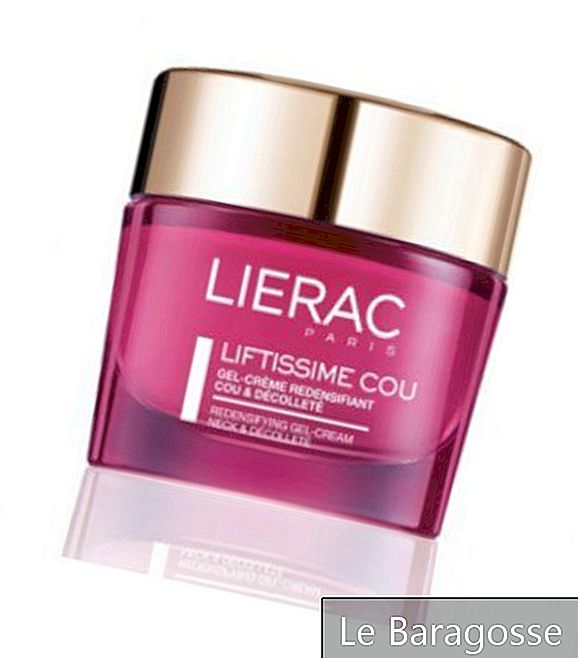
Lierac Liftissime Gel-Cream for Neck at $ 99.00 at Be & Care
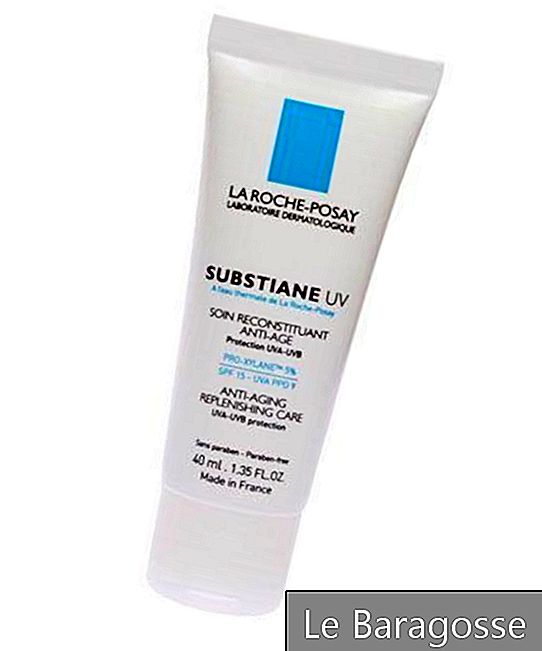
Substiane + uv La Roche Posay for R $ 117,49 at Ultrafarma

Avène Sérénage Anti-Aging Cream for R $ 152,91 on Netfarma
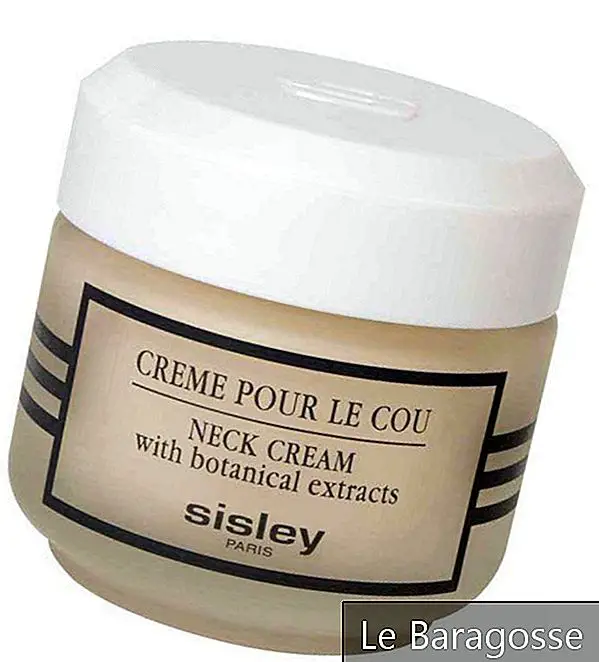
Sisley Pour Le Cou Neck Cream for R $ 880 on Web Beauty
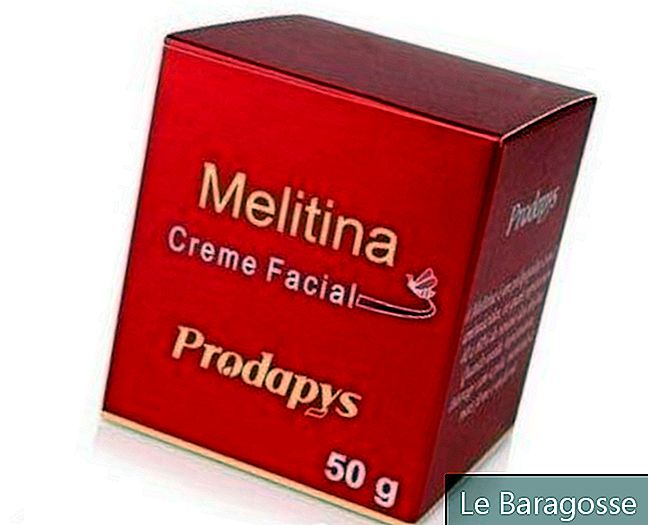
Melitina Facial Cream for R $ 59,90 at Natue
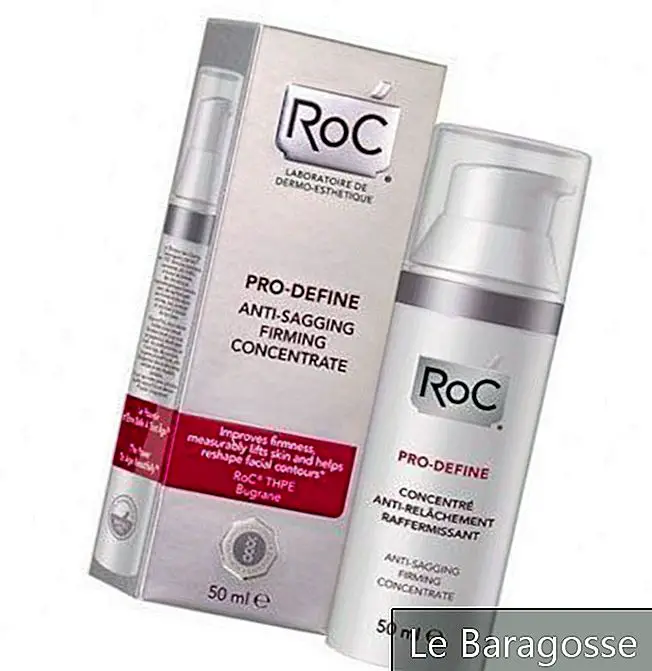
RoC Pro-Define Cream for R $ 154,90 at Aromatta
? Tensor creams give a less flaccid appearance to the skin and promote the well-known "cinderella effect", ideal for parties, for example. Are rafermine, argireline and tensine the best known ?, adds the dermatologist.
Body
Roberta Bibas, dermatologist specializing in aesthetic dermatology, postgraduate and master at the Federal University of Rio de Janeiro (UFRJ), comments that the active ingredients for sagging topical use are: Dmae, Tensine, Raffermine. "There's no difference if it's for the butt or arm or face," he says. In the gallery below are some examples of anti-sagging creams for use in various body regions.

Dove Deo Firmador Intense for R $ 4,19 at Panvel
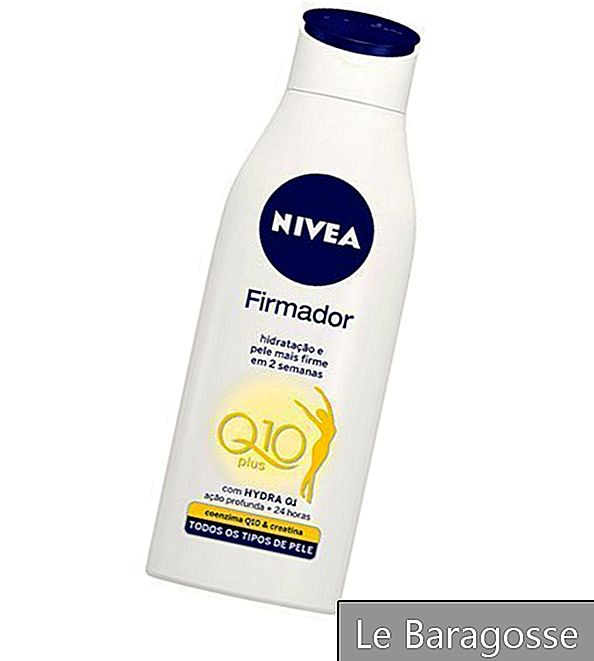
Nivea Firming Moisturizing Lotion for $ 5.74 at Americanas

Nutralift Adcos Body Cream for R $ 269 at Pharmacy Effectiveness
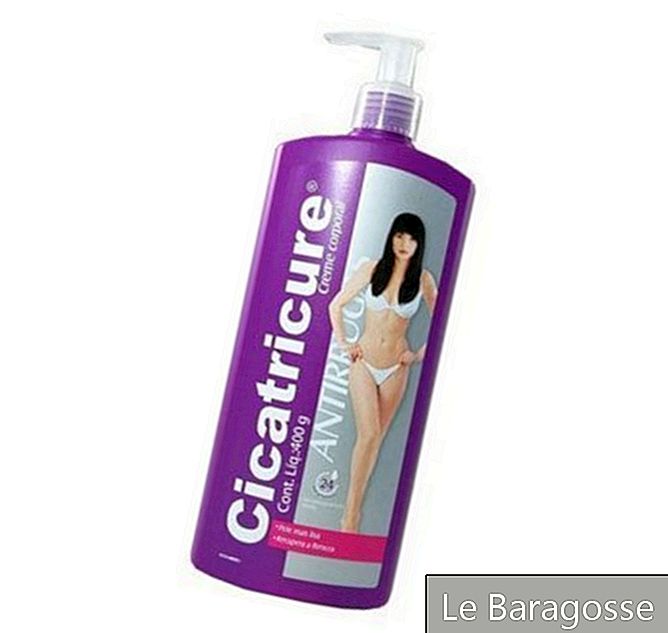
Cicatricure Body Cream for R $ 36,90 at Jacques Janine
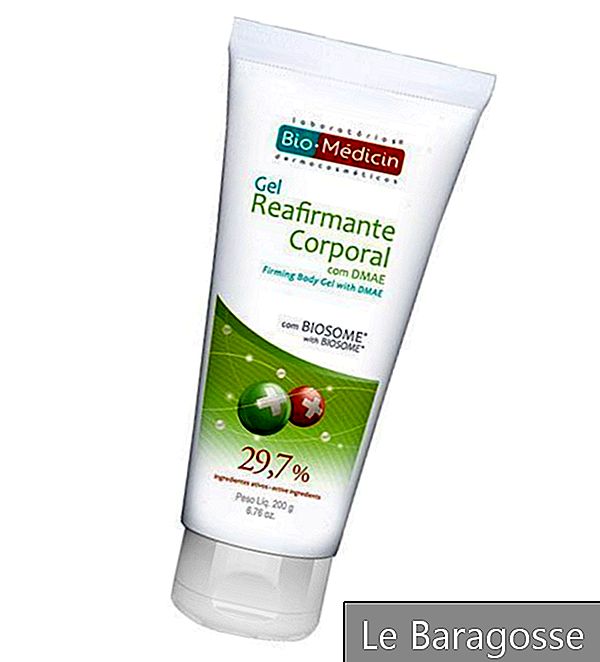
Bio-Medicin Body Gel for $ 83.90 at Americanas

Valmari Slim & Sculpt Cream for $ 39.99 at Dafiti

Bel Col SlimF (Body Firming Cream) for R $ 95,30 at Cabelos Online

Sesderma Sesnatura Breast & Body Firming Cream for R $ 113,03 at Cosmetis

Phytobella Flaccidity Lotion for R $ 79,95 at Attitude Cosmetics
As each case is unique, it is best to talk to your dermatologist about the use of creams associated or not with other treatments for sagging skin.
2. Aesthetic Procedures

Currently, various aesthetic procedures are indicated to soften and treat sagging skin, as well as muscle, in different parts of the body and the face. Below, professionals talk about 13 procedures they consider to be the best:
1. Radiofrequency: Juliana points out that, for young women or those who do not want invasive procedures, radio frequency is a device that brings good results.• These are generally biweekly sessions that can be done in any region of the face or body and stimulate collagen production. In addition, they also promote the? Cinderella effect? on party eve ?.
This is a technique that works by generating heat in the subcutaneous tissue, inducing the production of new collagen fibers and thus improving the appearance of the skin. Among the most common indications for radiofrequency are: skin sagging improvement, wrinkle reduction etc.
Graziele comments that in cases of facial and breast sagging, tissue (skin) sagging is more evident. "Treatments like radiofrequency have shown great results because they stimulate the production of collagen and elastic fibers, improving skin tone," adds the physiotherapist.
2. Hyaluronic Acid Filling:Juliana explains that for patients who have the appearance of grooves and loss of volume in the face? very common when there is weight loss? it is suggested to apply hyaluronic acid filler by the dermatologist. The effect is quite natural and the improvement is noticeable. Also, the duration is quite satisfactory.
3. Application of L-polylactic acid: Juliana says that for patients who experience softening of the skin and the appearance of wrinkles in the cheeks, applying L-polylactic acid is a great option. It stimulates collagen and thickens the skin again. It's ideal for saggy thin faces?
Michele points out that polylactic acid injection is widely used in the face and neck with excellent results.
4. L-polylactic acid wire: In addition to the injectable form, there are L-polylactic acid strands, which are applied by means of small needles to support the flaccid areas. the skin. Can be worn only on the face.
Dermatologist Juliana also points out that the latest in facial sagging treatment are L-polylactic acid wire and microfocus ultrasound equipment. ? The strands perform traction of the skin that has fallen and stimulates the production of collagen over the months. Ideal also for initial sagging and thinner faces.
"The facial support wires have opened a new paradigm within this subject and are undoubtedly today one of the best techniques used to overcome sagging skin", comments Michele.
5. Microfocus Ultrasound: Juliana points out that microfocus ultrasound is among the latest in facial sagging treatment. • Ultrasound is a treatment used in many regions with good results for mild to moderate sagging. The disadvantage is the pain and the high cost?
6. Chemical Peel: According to Juliana, another method that can be used to counteract sagging skin is chemical peeling, which removes damaged tissue, improving skin texture.
7. Aussie Current: In cases of muscle flaccidity, Graziele points out, the Aussie current is combined with physical activity to strengthen the muscles, with the increase of muscle mass, and can be applied to the buttocks, thighs, arms and abdomen.
Fernanda Carvalhal, manager of the aesthetic clinic Hollywood RJ, also indicates the use of the Aussie Chain. At Hollywood Aesthetics, we treat both body and facial flaccidity with revolutionary radiofrequency technology that stimulates collagen and elastin production associated with the Aussie Current, which is an electrical stimulus used to produce muscle contraction where is applied, thus improving local circulation, stimulating lymphatic flow and improving cellulite ?, says.
8. Russian Current: also indicated in the case of muscle flaccidity, according to Graziele. It should be combined with physical activity to strengthen muscles and can be applied to the buttocks, thighs, arms and abdomen.
9. Ulthera: According to Roberta, the device provides an instant facial lifting effect similar to plastic surgery. And the best: no cuts, pain or discomfort. Improves facial contour, is not invasive and the results are already visible after the first session ?, says.
Dermatologist Roberta explains that the technology used is fractional ultrasound, which acts on the deepest layers of the dermis and facial muscles. The device contracts the elastic fibers of the skin and stimulates the body's production of collagen, causing a lasting rejuvenating effect. Better than other radiofrequency devices, it can contract the muscular fascia, the thin muscle that surrounds the face and neck. In addition, the device contracts the collagen and elastic fibers of the superficial and deep dermis. Radiofrequencies only contract the fibers of the dermis and not the muscle. And is it in this muscle that plastic surgeons act? say.
According to Roberta, Ulthera is not recommended for pregnant women and people with skin conditions at the site of application, so it should be done with the supervision of a dermatologist. The device is approved by the FDA (Food and Drug Administration) and Anvisa (National Agency for Health Surveillance).
Ulthera can be used to treat / alleviate facial and body laxity.
10. Thermacool: according to Roberta, its action is through radio frequency. The advantage of the treatment is that it is efficient in the emission of pulses (heat waves) that penetrate the dermis, the deepest layer of the skin. Does the treatment stimulate the contraction of collagen fibers, which support the skin and form new fibers ?.
Thermacool can be used to treat / soften sagging face, neck, legs, belly and buttocks.
11. Freeze: Based on technology that combines magnetic pulses with bipolar radiofrequency, the device softens the effects of skin aging; treats flabby body and facial and aids loss of measurements, according to Roberta.
"The result is greater contraction in collagen fibers, improving the sagging face, neck, arms, abdomen and legs," says dermatologist Roberta.
12. CO2 Laser: According to Michele, it is one of the best and most suitable for the facial region. "It should be done, when for this purpose to treat sagging in order to stimulate the dermis, so it is no use doing it too shallow to treat sagging, it should be done deeper." The results are often very appreciated?, Highlights the dermatologist.
13. Massages: For Graziele, cosmetic massages associated with DMAE-based cosmetics, vitamin E and moisturizers are also indicated in order to improve skin tissue nutrition. "These techniques can be applied to both the facial and breast regions, as well as other body areas such as the buttocks, thighs, abdomen and arms," he says.
However, according to dermatologist Roberta, massages are not the best option for sagging specifically. That's because there is no collagen stimulation with massage. It can be effective for improving bloating aspect, cellulite ?, says.
As you can see: there are several supermodern treatment options to treat / soften both facial and body sagging. It is difficult to say simply which one is more or less effective, as each case has an indication, which can only be defined by the professional through physical examination of the patient.
3. Physical exercises

Check out the main physical exercises indicated to help treat the sagging of each body part:
Arms
To treat sagging arms, physical activity is critical. "Improving muscle tissue is essential for improving sagging," says dermatologist Juliana.
Ziva Brazil fitness coach Felipe Kutianski points out that lean mass increase is the best? Weapon? against sagging. "Two very important characteristics in this type of training are: the improvement of muscle mass and the reduction of fat percentage," he says.
“In bodybuilding, we have great exercises to combat sagging arms, such as bench presses and pulls. For those who train at home or in parks, we have the push-ups and fixed bars ?, highlights the fitness coach.
Breasts
Kutianski points out that there are exercises that work directly in the chest area, such as the bench press, push-ups, crucifixes etc. But directly, focused on the breasts, no. The breast tissue that usually suffers from sagging is more superficial, limiting muscle work ?, clarifies.
What happens in some cases is the reduction of the breasts due to the drop in body fat. Care must be taken with the "gym myths" promising localized miracles, "says the fitness coach.
Legs
Squats in general, sinking, striking, stiff, deadlifts and leg press are the indications of Kutianski. "Believe me, classic exercises are the best," he says.
Belly
Remember: Exercise does no miracle. Always be up to date with your diet? Comments Kutianski.
"For the abdomen region, I would first recommend the isometric planks, followed by intense oblique dynamic exercises, with or without overload (kg) and ending with overloaded rectus abdominis dynamics, even on declined benches," says the trainer. physicist.
Butt
Kutianski recommends the same leg work: general squats, sinking, striking, stiff, deadlift, and leg press. "Mostly squats and sinks, because they have greater gluteal activation during movement," he says.
It is noteworthy that it is very important to have the guidance and monitoring of a personal trainer / trainer to teach the correct execution of each exercise, and indicate the best exercises for each case.
4. Food

Eating habits are very important when it comes to treating / preventing sagging. "Drinking lots of water helps maintain skin quality," says dermatologist Juliana.
Marco Cassol, a plastic surgeon and female face specialist, also stresses the importance of hyperhydration (drinking three liters of water a day) to treat / soften sagging skin.
Important foods for the production of collagen, according to Juliana, are: fruits and vegetables rich in vitamin C, such as orange, papaya and others; and protein, especially present in red meat. "Sugar-rich foods should be avoided as they worsen aging," he explains.
Cassol also recalls the importance of adequate protein intake. "For example, eat two egg whites a day," he comments. Thus, it reinforces the need to rely, if possible, on the guidance of a nutritionist who will pass the diet appropriate to your needs.
Andreia Barros, nutritionist at the Linnus Institute RJ, also highlights other examples of foods that should be part of the menu. Are those rich in:
- Lysine: birds / fish
- Glycine: Pea, Meat
- Prolina: Eggs, Meat, Fish
- Vitamin A: Carrot, Egg, Milk
- Vitamin C: Lemon, Acerola, Guava
- Manganese: soy
- Copper: Chestnuts
- Silicon: Barley, Vegetable
- Fatty Acids: cold water fish and flaxseed oil.
Cassol also recommends taking an anti-inflammatory juice with probiotic flour twice a day. It's worth writing down the recipe!
Anti Slack Juice Recipe
Beat in blender:
- 500ml of water
- 1/2 carrot
- 1 piece of ginger
- 1 leaf of cabbage
- ¼ of beet
- 4 oranges with pomace (cut orange into 4 and remove peel and seeds)
- 1 apple (remove seeds)
- 2 squeezed lemons
- 1 strawberry
- 2 prunes
- Finally, add a teaspoon of quinoa, psyllium, amaranth, chia or flaxseed.
According to Andreia, the use of vitamin C hydrolyzed collagen powder may also help to prevent / treat sagging skin.
For dermatologist Michele, amino acid consumption is more effective. “We have many amino acid supplements, and they are better than collagen, because collagen is a protein that will still be broken down into amino acids. But it's better than no supplementation, of course, but are there better supplements to be made? He says.
"The best thing is to study the metabolism, ordering all the tests of vitamins and hormones, and modulate the whole metabolism, with vitamins, amino acids, peptides, coenzymes, minerals, antioxidants and also hormones, if this is necessary for this patient. . This will make this organism optimized in everything in health, in defending your body, in preventing degenerative diseases and also in developing muscles, turgor (elasticity) of the skin, hydration, increase in elastic fibers, collagen fibers etc. ?, highlights the dermatologist specializing in anti-aging medicine.
Ideally, then, seek the advice of a nutritionist or physician who can evaluate the case individually, giving the main dietary advice and also indicating the necessary supplementation, if applicable.
5. Plastic Surgery

The plastic surgeon Moreira reminds that the sagging of the body parts involves not only the sagging of the skin, but also the musculature. • For each region, a surgical technique to remove excess skin. Those who suffered major weight loss? regardless of age? usually have indication of a body lift. In this case, what happens is that the skin, previously adjusted to a larger volume, has to adapt and? Cover? a much smaller volume, which can generate a "leftover", he says.
Also according to the plastic surgeon, what determines the degree of this sagging is the damage to the elasticity of the skin. ? Important factors contributing to this damage are, in addition to the degree of swelling, the age of the patient, the individual tendency to loss of elasticity, the original elasticity of the skin, the quality of blood supply to the area in question, and factors. external, such as the sun, smoking, eating habits and the type of physical activity that the person practices, for example ?, says.
In summary, it is possible to highlight as the main surgical indications to stop the sagging:
Face and neck
Moreira explains that, usually, when sagging facial tissues cannot be resolved by fillings and peels, plastic surgery becomes the most appropriate option. "This can occur in various age groups, but usually from the age of 40," he says.
Marco Cassol points out that the indications for plastic surgery usually occur when: there is a drop in the cheek and cheek region by age; the neck muscle is very pronounced; or there is localized fat in the neck."This excludes patients without sagging or overweight young people," he says.
Arms
Cassol explains that the plastic surgery indicated to treat arm sagging is called brachioplasty or arm dermolipectomy. • A T-scar (underarm and arm extension) scar is performed. It is indicated for patients who have had large weight losses and have many stretch marks and sagging in the arm ?, says.
Breasts
For dermatologist Juliana, the most viable treatment for sagging breasts is surgery.
Cassol points out that breast surgery is mammoplasty (usually used to reduce the breast) or mastopexy (usually to lift the breast). "They are indicated for patients with a lot of weight loss, breast drop by age, or breast fall and decrease after breastfeeding," he says.
Legs
Thigh dermolipectomy, according to Cassol, is the recommended plastic surgery to treat sagging legs. It is usually indicated for patients who have many stretch marks in the region between the thighs. Is a T-scar on the inguinal region and inner thighs ?, he explains.
Belly
Juliana points out that for cases where sagging is severe, especially in obese patients who lose a lot of weight, surgery is critical.
Cassol explains that abdominoplasty or abdominal dermolipectomy is indicated for repositioning the rectus abdominis muscles (six pack) when they retract with uterine growth during pregnancy or when they result in many streaks of skin below the navel. The resulting scar is similar to the cesarean scar, but three times larger ?.
Butt
Cassol explains that in the case of the butt, the indication of surgery depends on the problem. • If there is little projection of the butt, we can put glute prosthesis or fat graft on the gluteus. In cases of extreme sagging after stomach reduction surgery, gluteal dermolipectomy may be indicated ?, says the plastic surgeon.
The main causes of sagging skin
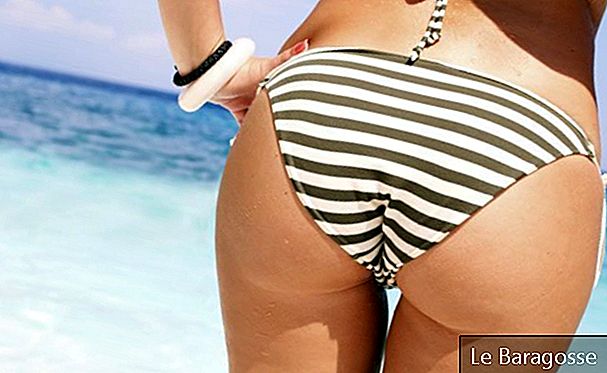
Graziele Almeida, a physiotherapist at the Pilates Posture Universe, says that sagging is usually one of the aesthetic changes that most plague women. There are two types of sagging: tissue sagging (skin sagging) and muscle sagging. In the first, the skin tissue is affected, there is a decrease in the amount of collagen fibers, malnutrition and dehydration of the skin tissue. Already in muscle flaccidity, the subcutaneous musculature is affected ?.
Although flabby skin bothers many women, it is worth remembering: it is a consequence of natural aging.
Marcelo Moreira, plastic surgeon, full member of the Brazilian Society of Plastic Surgery (SBCP) and member of the American Society of Plastic Surgery (ASPS), preceptor of the plastic surgery residency residency of the Federal Hospital of State Servers (RJ) and physician of the service of plastic surgery and microsurgery of the National Cancer Institute (INCa-RJ), explains that, from the age of 25, a decrease in elastic fibers, subcutaneous tissue and collagen occurs physiologically, resulting in the detachment of all skin layers .
Juliana points out that the causes of sagging are diverse. Naturally, over the years, collagen production decreases and thus the skin's natural thinning occurs. “In addition, we have resorption of the cheek bones and loss or dislocation of the fat that previously supported the skin on the cheek. With that we have the feeling that the skin is "falling", "melting", finally losing its support, "he says.
Graziele points out that the action of gravity, solar radiation, malnutrition and dehydration of the skin tissue, smoking, the concertina effect and improper diet are some factors that contribute to the sagging of the skin. Muscle flaccidity occurs due to physical inactivity, obesity and aging. "It is very common for the two types of sagging to appear associated, giving an even worse appearance to the body parts affected by the problem," says the physiotherapist.
Thus, in short, they can be highlighted as some of the factors that? Get worse? The natural aging / sagging process:
- Smoking;
- Excessive sun exposure;
- Bad eating habits;
- Genetic factors;
- Lack of physical exercise / Physical inactivity;
- Rapid weight loss /? Concertina effect ?.
Thus, while sagging skin should be viewed as naturally as possible, it is also appropriate to adopt some habits and even opt for some treatments to prevent or soften sagging.
How to avoid sagging skin

To treat sagging all areas of the body as well as the face, some preventive care is also essential. Avoiding excessive sun exposure is the first. The sun greatly favors aging. Cigarette no way. Does smoking greatly reduce collagen production ?, says dermatologist Juliana.
Remember that sagging must be faced calmly, after all, it is not possible to maintain a young skin forever! It is part of the natural aging process. But some simple tips help in avoiding and not? Getting worse? this painting:
- Count on a healthy diet, preferably with the supervision of a nutritionist, including on your menu functional foods (which may be good for your skin and overall health).
- Have a good protein intake.
- Especially avoid foods high in sugar.
- Avoid alcoholic beverages.
- Drink plenty of water daily.
- Do not smoke or stop smoking (if applicable).
- Avoid excessive sun exposure.
- Practice physical activities often, especially weight training, and have the help of a professional in the area to indicate the best exercises.
- Avoid the "concertina effect" by staying at your proper weight. This is because, the? Accordion effect? may favor sagging: when you get fat, the skin stretches; when you lose weight, it returns to normal, but tends to become less elastic.
Lastly, remember that self-esteem is critical! There is no harm in wanting to take care of your beauty, quite the contrary; But sagging skin should not be a major concern, after all, aging is a natural process that everyone is going through, and should never be viewed as a problem.
Weird Brightening Technique for Women Over 50 Lifts Sagging Face and Avoids Crepiness Tutorial (March 2024)
- Skin
- 1,230
















